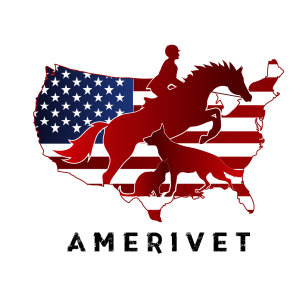To NAVLE or Not to NAVLE: A Guide for Non-AVMA Accredited Veterinarian Graduates

As a veterinarian graduate from the Middle East and North Africa (MENA) region, you may be considering sitting for the North American Veterinary Licensing Examination (NAVLE). The NAVLE is a pivotal step for veterinarians aiming to practice in North America. However, it comes with its own set of challenges and benefits, especially for graduates from non-AVMA accredited institutions. In this blog, we will delve into the pros and cons of sitting the NAVLE, outline the necessary steps, and provide key figures and statistics from the veterinary care industry to help you make an informed decision.
Pros of Sitting the NAVLE
Global Recognition and Opportunities
Passing the NAVLE opens doors to practicing veterinary medicine in the United States and Canada, where there is a high demand for veterinarians. According to the American Veterinary Medical Association (AVMA), the demand for veterinary services is projected to grow by 16% from 2019 to 2029, much faster than the average for all occupations.
Higher Earning Potential
Veterinarians in North America generally enjoy higher salaries compared to many other regions. The median annual wage for veterinarians in the United States was $99,250 as of 2020, according to the U.S. Bureau of Labor Statistics. This can significantly enhance your career prospects and financial stability.
Advanced Clinical Training
Sitting the NAVLE can be a stepping stone to advanced clinical training programs such as residencies and internships in North America. These programs can further enhance your skills and expertise in specialized areas of veterinary medicine. For more information, check out the American Association of Veterinary Clinicians (AAVC).
Professional Networking
Passing the NAVLE and practicing in North America can expand your professional network, providing opportunities to collaborate with leading experts and institutions in the field of veterinary medicine. This network can be invaluable for career growth and professional development.
Cons of Sitting the NAVLE
High Cost
The cost of sitting the NAVLE is substantial. The application fee alone is $720, not including the additional costs of preparatory courses, study materials, and potential travel expenses. For many, this financial burden can be significant. More details about fees can be found on the ICVA website.
Rigorous Preparation
The NAVLE is a challenging exam that requires extensive preparation. Non-AVMA accredited graduates might need to invest significant time and effort to meet the exam’s rigorous standards. This can be particularly demanding if you are balancing other professional or personal commitments. Study resources are available on platforms like VetPrep and Zuku Review.
Credential Verification
Graduates from non-AVMA accredited schools must undergo a credential verification process through agencies like the Educational Commission for Foreign Veterinary Graduates (ECFVG) or the Program for the Assessment of Veterinary Education Equivalence (PAVE). This process can be time-consuming and adds an extra layer of complexity.
Cultural and Professional Adjustment
Adapting to the veterinary practice standards and workplace culture in North America can be challenging. This includes understanding legal and ethical standards, communication styles, and clinical practices that may differ significantly from those in the MENA region. The AVMA’s guidelines provide a good overview of these standards.
Steps to Take the NAVLE
Credential Evaluation
Register with ECFVG or PAVE to have your veterinary degree evaluated. This step ensures that your education meets North American standards. Detailed instructions are available on the ECFVG and PAVE websites.
Application Submission
Submit your application for the NAVLE through the International Council for Veterinary Assessment (ICVA) website. Ensure you meet all eligibility requirements and provide the necessary documentation.
Preparation
Invest time in thorough preparation. Consider enrolling in preparatory courses and utilizing study materials specifically designed for the NAVLE. The pass rate for the NAVLE for first-time takers from non-AVMA accredited schools is around 50%, highlighting the need for diligent preparation. Resources like VetPrep and Zuku Review are highly recommended.
Exam Registration
Once your application is approved, register for the exam during the designated testing windows, typically in November-December and April. Detailed information can be found on the ICVA’s NAVLE page.
Taking the Exam
Sit for the NAVLE at an authorized testing center. The exam consists of 360 multiple-choice questions and takes about 7.5 hours to complete. Test center locations and additional details are available on the Prometric website.
Post-Exam Steps
If you pass the NAVLE, you can then proceed with the licensure application in the state or province where you intend to practice. If you do not pass, you can retake the exam in a subsequent testing window. For state-specific licensure requirements, refer to the AVMA’s licensure map.
Conclusion
Deciding whether to sit for the NAVLE as a non-AVMA accredited veterinarian graduate from the MENA region is a significant decision with far-reaching implications for your career. While it offers unparalleled opportunities for professional growth and financial reward, it also demands a considerable investment of time, effort, and resources. Weighing these pros and cons carefully will help you make the best decision for your professional future.
Ultimately, the NAVLE can be a gateway to a fulfilling and prosperous veterinary career in North America. Whether you choose to pursue this path or explore other opportunities, your dedication to veterinary medicine will always be a valuable asset in serving the health and well-being of animals around the world.

